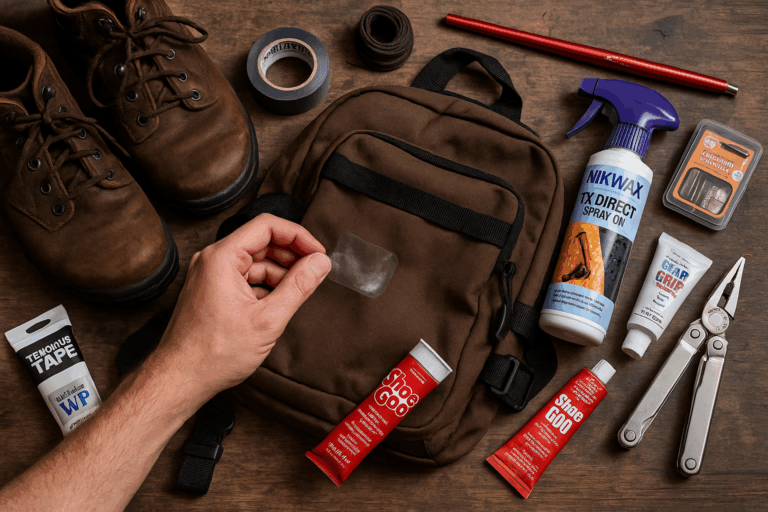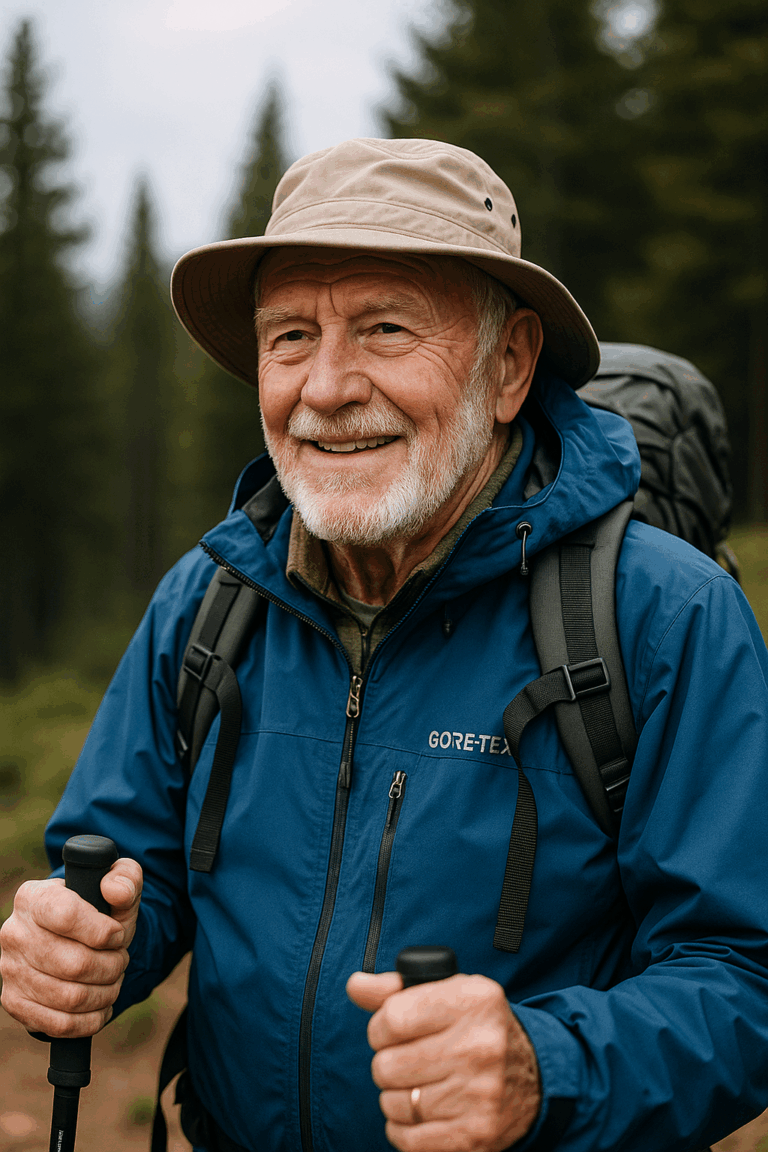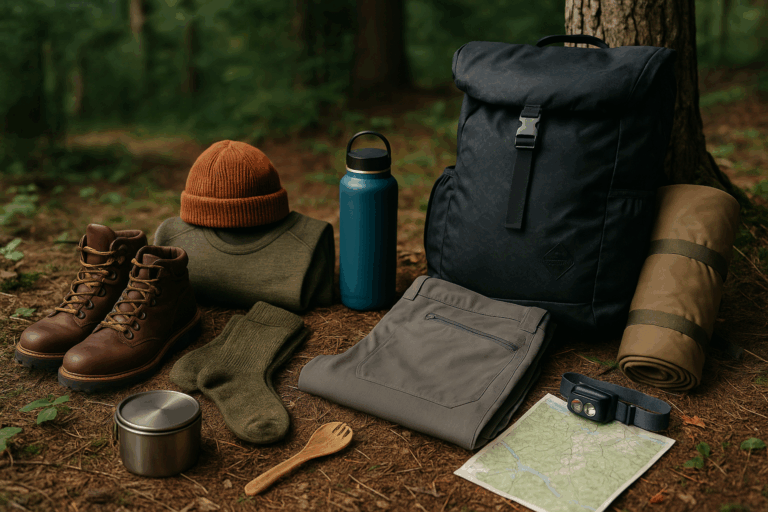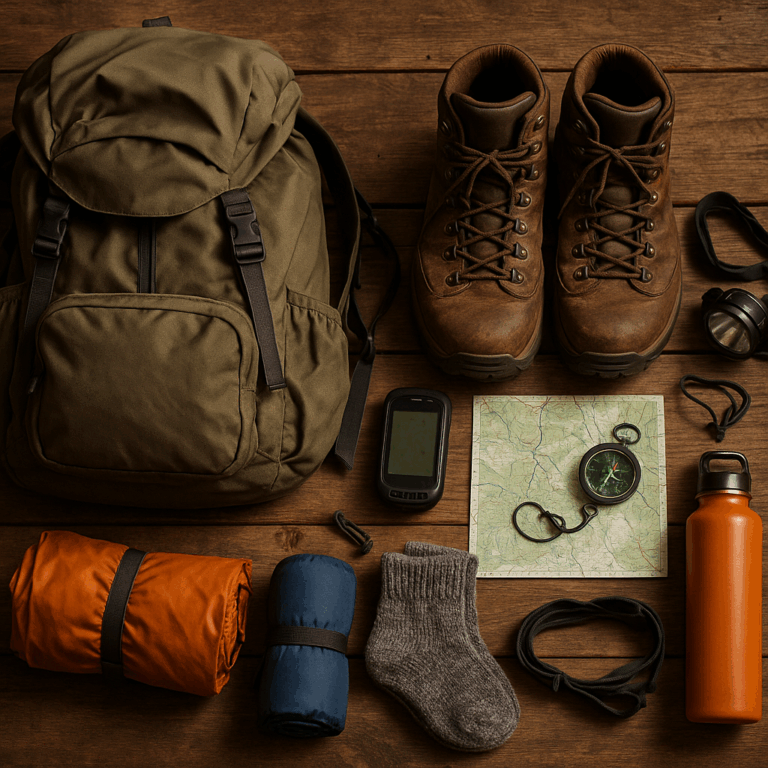Best Hiking Water Filters Review: Pick Right for Your Adventure?
Best Hiking Water Filters: 5 Systems That Actually Work
Finding the right water filtration system can make or break your backcountry experience. After years of testing different options, I’ve narrowed down the field to these five standout performers among the best hiking water filters available today.
Why the Sawyer Squeeze Water Filter System Became My Go-To Water Filter (After Learning the Hard Way)
I’ll be honest – I went through three different water filters before I finally landed on the Sawyer Squeeze, and man, do I wish I’d started here. My first backpacking trip with a cheap pump filter was basically a nightmare. The thing weighed almost a pound and took forever to pump enough water for my group.
The Sawyer Squeeze completely changed my backcountry game and ranks as one of the best hiking water filters for good reason. At just 3 ounces, this little beast filters down to 0.1 microns. It’s catching pretty much everything nasty you don’t want in your body – bacteria, protozoa, all that stuff. What really sold me was the ridiculous lifespan: 100,000 gallons. I did the math, and even if I’m filtering a gallon a day, this thing should last me over 270 years. Yeah, I’m probably not gonna live that long.
Features
The hollow fiber membrane technology is what makes this filter so effective among the best hiking water filters. Those 0.1 micron pores are tiny enough to block harmful microorganisms. They still allow water to flow through at a decent rate. The whole system weighs in at just 85 grams. That’s lighter than most energy bars I carry.
What you get in the box is pretty complete: the filter itself, two 32-ounce pouches, a cleaning plunger (seriously, don’t lose this), and a drinking straw attachment. The filter threads are standard, so it’ll fit most water bottles and hydration systems you already own.
Pros
Here’s where I messed up initially though. I got lazy about backflushing, and after about six months of regular use, the flow rate became painfully slow. Like, squeeze-until-your-hands-cramp slow. The cleaning plunger that comes with it isn’t just for show – you actually need to use it every 20-30 uses or whenever you notice the flow getting sluggish.
The versatility is what keeps this filter in my pack for every trip. It makes it one of the best hiking water filters for multiple situations and It screws directly onto standard water bottles. It also works perfectly with the included pouches. I’ve even rigged it to work with my hydration pack reservoir. For the price point, you’re getting incredible value.
Cons
Pro tip: get yourself a couple extra pouches because they will eventually wear out from all that squeezing. I learned this the hard way during a five-day trip when my pouch split on day three. The squeezing motion does put stress on the pouch material over time, especially if you’re not gentle about it.
One thing that surprised me was how much technique matters with the squeeze method. You can’t just death-grip the pouch and expect good results. Gentle, consistent pressure works way better and puts less stress on the pouch material. Also, don’t try to squeeze when the pouch is completely full – leave some air space at the top for better flow dynamics.
The straw attachment is actually pretty clutch for direct drinking from streams, though I don’t use it as much as I thought I would. It’s more about having options, and this system gives you tons of them.
My Love-Hate Relationship with the Katadyn BeFree
So here’s the thing about the Katadyn BeFree Water Filter – it’s simultaneously the best and most frustrating water filter I’ve ever used. I picked it up after getting tired of the slow flow rate on my old filter, and wow, this thing delivers on speed. We’re talking up to 2 liters per minute when it’s running clean, which is absolutely game-changing when you’re trying to fill up multiple bottles for your group.
The integrated soft flask design threw me off at first. I’m used to separate components. But having everything built into one unit actually makes a lot of sense on the trail. At 2.3 ounces, it’s even lighter than my Sawyer. The compactness is unreal – it basically disappears in my pack. This definitely puts it in the running for best hiking water filters when weight matters most.
Features
The 0.1 micron hollow fiber membrane does the same job as other premium filters among the best hiking water filters, blocking bacteria and protozoa effectively. What sets this apart is how they’ve integrated everything into that soft flask body. The filter screws right into the top of the 600ml flask, creating this seamless drinking experience.
The whole system weighs just 65 grams, and when empty, you can practically fold it flat. The lifespan is rated at 1,000 liters, which honestly isn’t as impressive as some competitors, but for most people that’s still a solid season or two of heavy use.
Pros
That flow rate though – it’s absolutely incredible when you need to hydrate fast. It’s one of the best hiking water filters for speed. I remember one particularly hot day in Utah when our group was getting pretty dehydrated. I was able to filter water for four people in under three minutes. The swish-cleaning method is brilliantly simple too.
The weight savings really add up over long distances. Every ounce matters when you’re covering 20+ miles a day, and shaving off almost an ounce compared to other systems actually makes a difference in how your pack feels.
Cons
Here’s where my frustration kicks in. I’ve been through three of these flasks now because they tear way too easily if you squeeze too hard. The first one lasted about eight months before developing a small tear near the bottom. The second one? I got overzealous trying to speed up the flow and basically pinched a hole right through the side.
The 1,000 liter lifespan sounds decent until you compare it to filters that last 10 times longer. If you’re a weekend warrior, no big deal. But if you’re doing long-distance hiking or frequent trips, you’ll be replacing this thing fairly regularly.
The compatibility issue is real too. This flask only works with Katadyn’s specific threading, so you can’t just screw it onto your favorite water bottle like you can with other systems. I’ve gotten around this by carrying a separate bottle and transferring water, but it’s an extra step that shouldn’t be necessary.
Despite the drawbacks, I keep coming back to this filter because when it works, it works incredibly well. Just treat that flask gently and maybe keep a backup system for longer trips.
When Group Camping Changed Everything: My Platypus GravityWorks Experience
I used to think gravity filters were just for lazy campers until I found myself responsible for water on a 12-person group trip in the Cascades. My trusty little squeeze filter suddenly felt like trying to fill a swimming pool with a garden hose. That’s when my buddy Mark introduced me to his Platypus GravityWorks 4.0L System, and honestly, it was a total game-changer for how I think about group water procurement.
The thing weighs 11.5 ounces, which sounds heavy compared to ultralight squeeze filters. But when you’re filtering water for multiple people, the math changes completely. I can hang this system up and have 4 liters of clean water in about 2-3 minutes. No effort on my part. Meanwhile, everyone else can set up camp or prep dinner. For group situations, this easily ranks among the best hiking water filters available.
Features
The 0.2 micron hollow fiber filtration is slightly larger pores than some competitors among the best hiking water filters. But it still catches all the nasty stuff you’re worried about. Bacteria, protozoa, cysts. The gravity-fed design means you literally just hang the dirty water reservoir above the clean water reservoir. Physics does the work.
The 4-liter capacity is where this system really shines. You’ve got a dirty water reservoir that holds the untreated stuff and a clean reservoir that collects the filtered water. The whole setup includes the reservoirs, filter cartridge, and all the tubing you need to make it work.
Pros
Group efficiency is unmatched with this system, making it one of the best hiking water filters for multi-person trips. I remember one trip where we had eight people and limited daylight to set up camp. While I hung the GravityWorks from a tree branch, everyone else could focus on pitching tents and getting dinner started. No standing around waiting for someone to squeeze pouches for 20 minutes.
The fast flow rate surprised me too. When everything’s working properly and you’ve got good elevation difference, this thing moves water quickly. Plus, your hands don’t get tired from squeezing, and there’s no pumping motion that wears you out after filtering gallons of water.
Cons
The bulk factor is real though. This isn’t going in your ultralight setup unless you’re splitting gear with a partner or group. At over 11 ounces, it’s heavier than most people want to carry solo, and the reservoir system takes up way more pack space than a compact squeeze filter.
Finding good hanging spots can be surprisingly tricky. You need decent elevation difference and a sturdy branch or anchor point. I’ve definitely been in situations where the terrain just didn’t cooperate, and I ended up having to get creative with trekking poles and guy lines to make it work.
The multiple components thing is both good and bad. More parts means more things that can potentially fail or get lost. I learned to always double-check that I had all the pieces before leaving camp because losing one small connector basically makes the whole system useless.
Cleaning is more involved than simpler systems too. You’ve got two reservoirs, tubing, and the filter cartridge to maintain. It’s not difficult, but it’s definitely more steps than just backflushing a squeeze filter.
Despite the drawbacks, this system has earned a permanent spot in my group camping gear. For solo trips or when weight is critical, I’ll grab something lighter. But when I’m responsible for keeping multiple people hydrated, the GravityWorks is absolutely worth the extra weight and bulk.
Why I Almost Gave Up on the LifeStraw Peak (But Didn’t)
The LifeStraw Peak Squeeze came into my life during what I call my “filter failure summer.” I’d just had my third water filter crap out on me in six months – different brands, same result. I was getting pretty cynical about the whole portable filtration thing when my local gear shop guy practically forced this thing into my hands. “Just try it,” he said. “If it breaks in the first month, bring it back.”
That was two years ago, and this bottle is still going strong. At 3.5 ounces, it’s not the lightest option out there, but what sold me was how solid it feels. The collapsible bottle design initially seemed gimmicky, but it’s actually pretty brilliant for packing efficiency. Check out the LifeStraw Peak Squeeze Bottle product page for full specs.
Features
The 0.2 micron membrane filtration handles all the usual suspects that the best hiking water filters need to address – bacteria, parasites, and even microplastics, which is something I never really thought about until I started reading about plastic pollution in remote water sources. The optional carbon capsule is where things get interesting – it actually improves taste, which matters more than you’d think when you’re drinking sketchy stream water.
The 2,000 liter lifespan hits that sweet spot between the crazy-long Sawyer filters and the shorter-lived options. For most people, that’s probably 2-3 seasons of regular use. The collapsible bottle comes in different sizes too, which is nice if you want to match your capacity to your trip length.
Pros
Durability is where this thing really shines among the best hiking water filters. I’ve dropped it on rocks, stuffed it in overpacked side pockets, and generally abused it the way you do with gear that you actually rely on. The bottle material feels way more robust than the thin pouches that come with some squeeze systems.
The leakproof design has saved me from soggy gear more than once. I learned the hard way with other systems that a small leak in your pack can ruin electronics or make your sleeping bag damp. This bottle actually seals properly, which sounds basic but isn’t always guaranteed among the best hiking water filters.
The microplastics filtration is something I didn’t know I wanted until I had it. There’s something reassuring about knowing you’re not ingesting tiny plastic particles along with your mountain stream water.
Cons
The inline hydration limitation drove me nuts initially. If you’re someone who likes to drink directly from a hydration pack while hiking, this system won’t work for you. It’s strictly a fill-and-drink or fill-and-transfer setup.
Weight-wise, it’s heavier than the ultralight options by about half an ounce. That might not sound like much, but when you’re trying to shave every gram for a long-distance hike, it adds up. I’ve definitely left it behind on trips where every ounce mattered.
The flow rate thing is real – after heavy use without cleaning, it definitely slows down. I made the mistake of ignoring the maintenance schedule during a particularly busy hiking season, and by the end of summer, filtering water felt like watching paint dry. The good news is that proper backflushing brings it back to life pretty quickly.
Here’s what I’ve learned about maintenance: don’t wait until the flow rate is painfully slow to clean it. I do a quick backflush every 4-5 uses now, and it keeps everything running smoothly.
The carbon capsule is optional, but I actually recommend it if you’re dealing with heavily mineralized water or sources that taste funky. It’s an extra component to track, but the taste improvement is noticeable.
This filter has become my reliable workhorse for solo and small group trips where durability matters more than cutting every possible gram.
The Tank That Changed My Mind About Pump Filters
I swore off pump filters after a disastrous trip in 2018 where my cheap pump died on day two, leaving me boiling water for the rest of the week. So when I inherited an MSR MiniWorks EX from my uncle’s gear collection, I almost sold it without even trying it. “Who wants to carry around a 14.6-ounce brick?” I thought. Man, was I wrong about this thing.
My first real test came during a fishing trip to some seriously murky alpine lakes in Colorado. The water looked like chocolate milk from all the glacial silt, and my usual squeeze filters would’ve clogged instantly. The MSR MiniWorks EX Microfilter just chugged through it like it was nothing, producing crystal clear water while I sat there genuinely impressed.
Features
The ceramic filter element combined with the carbon core is what makes this system different from everything else I’ve used among the best hiking water filters. That 0.2 micron ceramic can be scrubbed clean in the field when it gets clogged – something you can’t do with hollow fiber filters. The carbon core handles chemicals and improves taste, which is clutch when you’re dealing with agricultural runoff or heavily treated municipal water sources.
The hand-pump operation feels old school, but there’s something to be said for not depending on gravity or your grip strength. The 2,000 liter lifespan is conservative too – with proper maintenance, this thing can go way longer because you can actually clean and restore the ceramic element.
Pros
Field maintainability is where this filter absolutely dominates among the best hiking water filters. I’ve scrubbed the ceramic element clean with the included brush right on the trail when it started flowing slowly. Try doing that with a hollow fiber membrane – you’ll just destroy it.
The ruggedness factor is unreal. I’ve seen these things take abuse that would kill other filters and keep working. Mine’s been dropped on rocks, frozen solid by accident, and generally treated like the tool it is. Still pumps water reliably.
Working with dirty water is this filter’s superpower among the best hiking water filters. While other hikers were hiking upstream looking for cleaner sources, I could pump directly from that silty lake or muddy stream without worrying about immediate clogging. The ceramic pre-filter handles the big particles, and the carbon takes care of the taste issues.
Cons
The weight is absolutely brutal for backpacking. At nearly a pound, this thing weighs more than some people’s entire shelter systems. I’ve only carried it on car camping trips and short overnight hikes where the extra weight wasn’t a deal-breaker.
That 1 liter per minute flow rate sounds decent until you’re actually sitting there pumping for your group. Your arm gets tired, especially if you’re filtering several liters. I learned to take breaks and switch arms, but it’s definitely more work than passive systems.
The pumping motion itself can be a pain when you’re dealing with low water sources or awkward positions. I’ve found myself doing weird contortions trying to get the intake hose deep enough into shallow streams while maintaining leverage for pumping.
Size-wise, it’s bulky too. Even when disassembled, the components take up serious pack space. This isn’t something you’re throwing in a running vest or ultralight setup.
Here’s the thing though – despite all these drawbacks, I still reach for the MiniWorks for certain trips. If I’m going somewhere with questionable water quality, doing extended car camping, or need absolute reliability in harsh conditions, this is what I grab.
It’s taught me that sometimes the old-school solution is still the best solution, even if it’s not the lightest or fastest. When other filters are struggling or failing, the MiniWorks just keeps working. That peace of mind is worth the extra weight on the right trips.
The maintenance routine becomes second nature too. A quick scrub of the ceramic element every few uses keeps everything flowing smoothly, and knowing I can fix it in the field instead of being stuck with a dead filter is genuinely comforting.
Finding Your Perfect Filter Among the Best Hiking Water Filters
After testing all these systems extensively, I’ve learned that there’s no single “best” filter – it all depends on your specific needs. The best hiking water filters for ultralight solo trips differ completely from the best hiking water filters for group camping or car camping scenarios.
For most solo hikers, the Sawyer Squeeze offers the best balance of weight, reliability, and value among the best hiking water filters. If speed is your priority and you’re careful with gear, the Katadyn BeFree is hard to beat. Group leaders should seriously consider the Platypus GravityWorks, while anyone dealing with really questionable water sources will appreciate the MSR MiniWorks’ bomb-proof reliability.
The LifeStraw Peak sits in a sweet spot for people who want durability without the weight penalty of pump systems, making it one of the best hiking water filters for those who prioritize build quality.
Whatever you choose from these best hiking water filters, remember that proper maintenance is key to getting the most out of your investment. Clean your filter regularly, follow the manufacturer’s guidelines, and always have a backup plan for water treatment in the backcountry.







